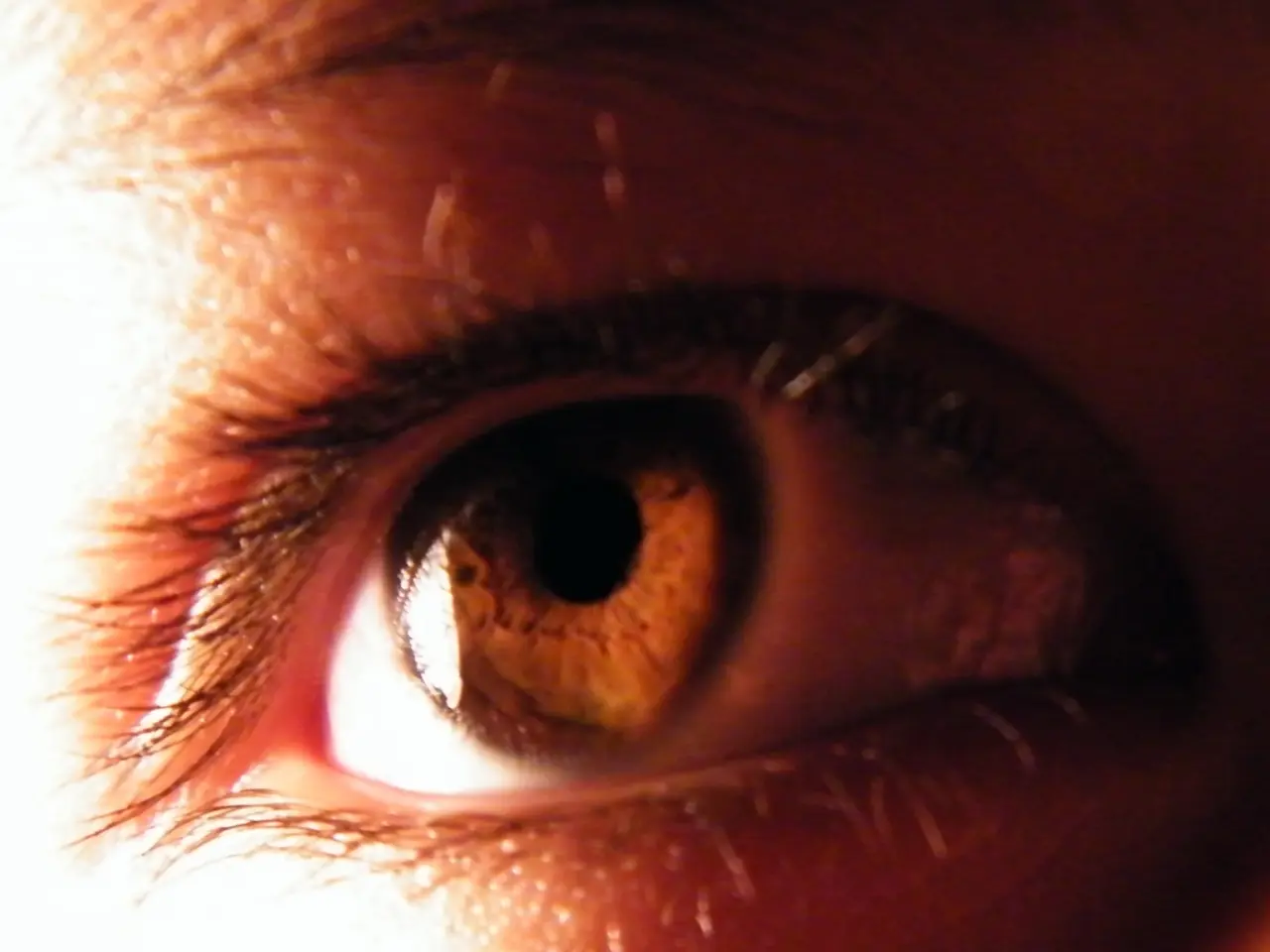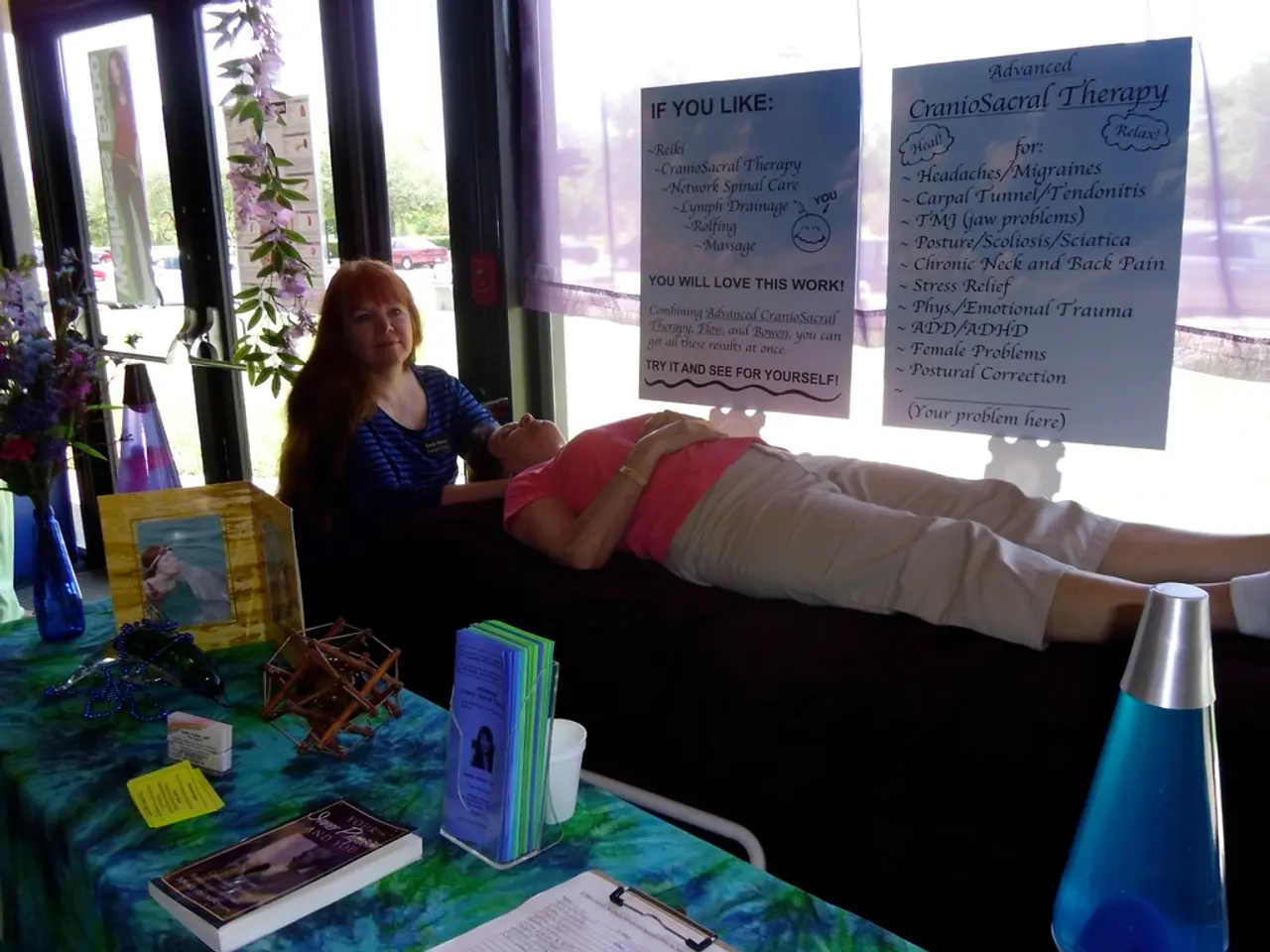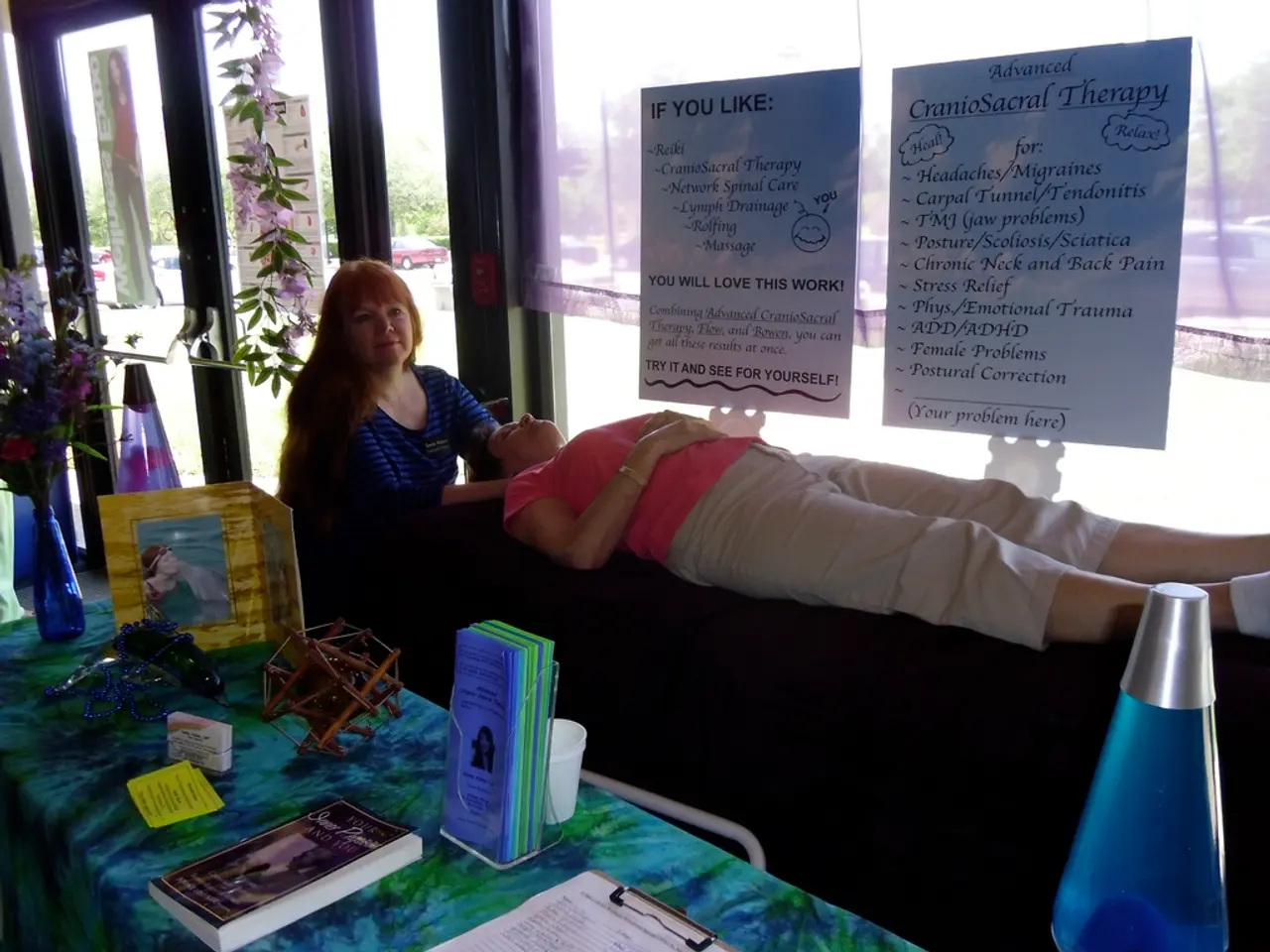Chronic lack of eye moisture or dehydrated eyelids
Dry, itchy eyelids can be a common issue for many people, especially those suffering from certain skin conditions such as atopic dermatitis (eczema), contact dermatitis, and seborrheic dermatitis. This article provides a guide on how to manage dry eyelids at home, as well as when to seek medical advice.
During the winter months, the air becomes drier, which can exacerbate dryness in the top layers of the skin on the eyelids. This dryness may go unnoticed by some people, while others may experience intense irritation that worsens during blinking and causes swelling.
Atopic dermatitis, a common skin condition, may cause dry, scaly skin, pain or tenderness, rashes that ooze fluids or bleed after scratching, lichenification (thickening and wrinkling of the skin), deepening of wrinkles and lines on the skin, and itching. Seborrheic dermatitis, an inflammatory skin condition, can cause flaking skin, itching, white scales, yellowish or oily-looking crusting, and is usually found in patches on the face, scalp, and chest in adults.
Contact dermatitis occurs when a person comes into contact with something they are allergic to, such as makeup ingredients, metals on eyeglasses, shellac, benzalkonium chloride, fragrances, surfactants, acrylates, neomycin and bacitracin, and irritant substances. Blepharitis, a condition that affects the edges of the eyelid, can cause the eyelids to feel dry or sandy.
To manage dry eyelids at home, it is essential to adopt a gentle skincare routine. Identify and avoid triggers that worsen eyelid dryness, such as harsh skincare products, allergens, or irritants. Use gentle, fragrance-free cleansers specifically formulated for sensitive skin around the eyes to avoid further irritation or dryness. Moisturize regularly with simple, calming eye creams or ointments designed to soothe and hydrate delicate eyelid skin.
Avoid potent skincare ingredients like retinol or exfoliants directly on eyelids since these can worsen dryness and sensitivity. If using such products on your face, apply moisturizer or a gentle occlusive before to protect the eyelids. Maintain a gentle skincare routine with lukewarm water instead of hot, avoid rubbing or scratching the eyelids, and remove makeup carefully and gently.
Consider natural oils or calming serums rich in antioxidants and anti-inflammatory ingredients to relieve itching, redness, and irritation safely around the eyes. Protect the skin from sun exposure using moisturizers with SPF suitable for sensitive skin near the eyes to prevent dryness caused by sunburn. In children or sensitive individuals, creams clinically tested for eczema-prone skin (like E45 or similar) can support skin barrier repair and hydration.
If symptoms persist or worsen despite these home care measures, it is advisable to seek medical advice for possible prescription treatments or allergy testing. A doctor may recommend antifungal treatments for seborrheic dermatitis or prescribe antihistamines to help with itching or antibiotics for associated infections. Contact dermatitis can be treated by avoiding known triggers, such as certain cosmetics or skin care products, and a doctor may help identify these triggers.
The American Academy of Dermatology Association recommends moisturizing several times a day, using a humidifier, avoiding prolonged sun exposure, and using gentle cleansers and skin products for sensitive skin. If symptoms persist, a person should speak with a doctor, who can prescribe medications such as corticosteroid creams to reduce symptoms.
- Some people might not realize that the winter's dry air can worsen the dryness in their eyelids' top layers, leading to irritation during blinking and swelling.
- Atopic dermatitis, a prevalent skin condition, can cause dry, scaly skin, pain, tenderness, rashes, lichenification, deeper skin wrinkles, and persistent itching.
- Seborrheic dermatitis, another inflammatory skin condition, may result in flaking skin, itching, white scales, and yellowish or oily-looking crusting, often found in specific areas like the face, scalp, and chest.
- Contact dermatitis emerges when a person comes into contact with something they are allergic to, like makeup, eyeglass metals, benzalkonium chloride, fragrances, or irritant substances, which could lead to dryness on the eyelids.
- Blepharitis, a condition affecting the eyelid's edges, can trigger feelings of dryness or sandiness on the eyelids.
- Adopting a gentle skincare routine is crucial to manage dry eyelids at home, which involves identifying and avoiding triggers and using gentle, fragrance-free cleansers specifically formulated for sensitive skin around the eyes.
- It's important to moisturize regularly using simple, calming eye creams or ointments designed for delicate eyelid skin, as this can soothe and hydrate the area effectively.
- To prevent worsening dryness and sensitivity, avoid potent skincare ingredients like retinol or exfoliants on the eyelids, and apply moisturizer or a gentle occlusive before using such products on the rest of the face.
- In a gentle skincare routine, minimize hot water use, avoid rubbing or scratching the eyelids, and remove makeup gently and carefully to help eliminate dryness and irritation.
- Consider using natural oils or calming serums rich in antioxidants and anti-inflammatory ingredients to relieve itching, redness, and irritation naturally near the eyes.
- To protect the skin from sun exposure, use moisturizers with SPF suitable for sensitive skin near the eyes when going outdoors, as this can prevent dryness caused by sunburn.
- In children or sensitive individuals, creams clinically tested for eczema-prone skin (like E45 or similar) may help with skin barrier repair and hydration.
- If symptoms do not improve despite home care measures, it's advisable to consult a doctor for possible prescription treatments or allergy testing.
- A doctor may recommend antifungal treatments for seborrheic dermatitis, antihistamines to address itching, or antibiotics to combat associated infections.
- Contact dermatitis could be treated by avoiding known triggers, such as specific cosmetics or skincare products, and speaking with a doctor could help identify these triggers and provide additional recommendations.




